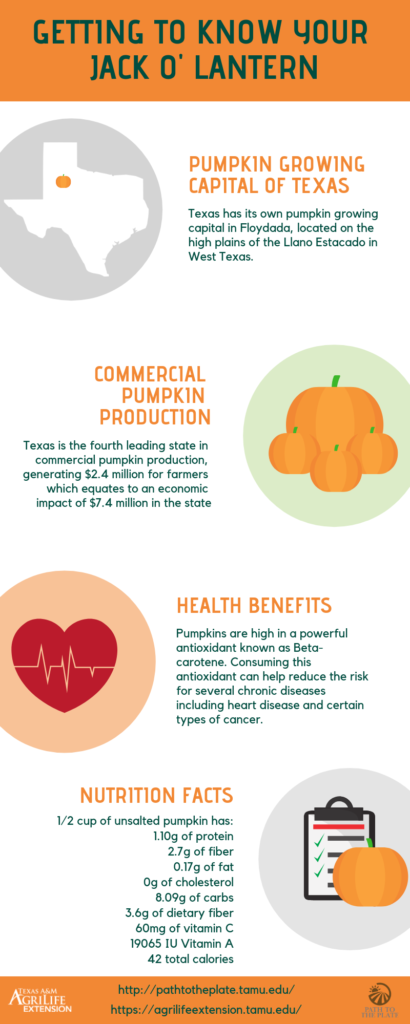Fall is here and so are the abundance of crops that come with it! While Texas is known for its ability to produce crops such as cotton, corn, and wheat, we often forget that Texas has its own pumpkin growing capital in Floydada, located on the high plains of the Llano Estacado in West Texas.
According to Texas A&M University’s Aggie Horticulture, Texas is the fourth leading state in commercial pumpkin production, generating $2.4 million for farmers which equates to an economic impact of $7.4 million in the state. Approximately 90% of the 5,000-8,000 acres of pumpkins planted in Texas each year is done in the West Texas region, or more so, in areas with monthly average temperatures of 60-80°F and low humidity. AgriLife Extension Service’s Vegetable Specialist, Russell Wallace, Ph.D., helps harvest 2,500 acres of pumpkins by hand in late September, and said this often yields 15 to 30 tons per acre.
In addition to the impact that pumpkins have on the economy, they are also good for your health and contain many nutrients. According to Dr. Jenna Anding, professor and extension specialist for Texas A&M’s Department of Nutrition and Food Science, pumpkins are a good source of dietary fiber and high in a powerful antioxidant known as Beta-carotene. Consuming this antioxidant can help reduce the risk for several chronic diseases including heart disease and certain types of cancer. Nutrition facts from the United States Department of Agriculture (USDA) for ½ cup of unsalted pumpkin can be found below:
- 1.10g of protein
- 2.7g of fiber
- 0.17g of fat
- 0g of cholesterol
- 8.09g of carbohydrates
- 3.6g of dietary fiber
- 60mg of vitamin C
- 9065 IU Vitamin A (which includes Beta-carotene)
- 42 total calories
For many of us, pumpkins mean pumpkin pie. However, AgriLife Extension Service’s Dinner Tonight has developed several healthy recipes that include pumpkin as the main ingredient, including a pumpkin puree recipe that is made from scratch! To find more pumpkin recipes from Dinner Tonight.


